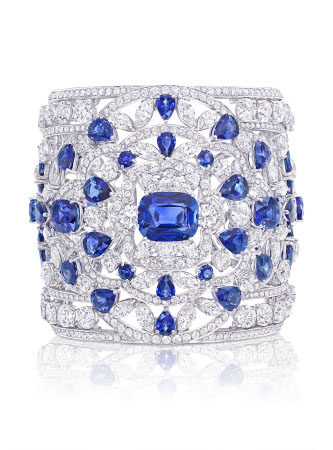
Sapphire- September Birthstone
08.09.17
"A maiden born when autumn leaves
Are rustling in September's breeze,
A Sapphire on her brow should bind;
To bring her joy and peace of mind."
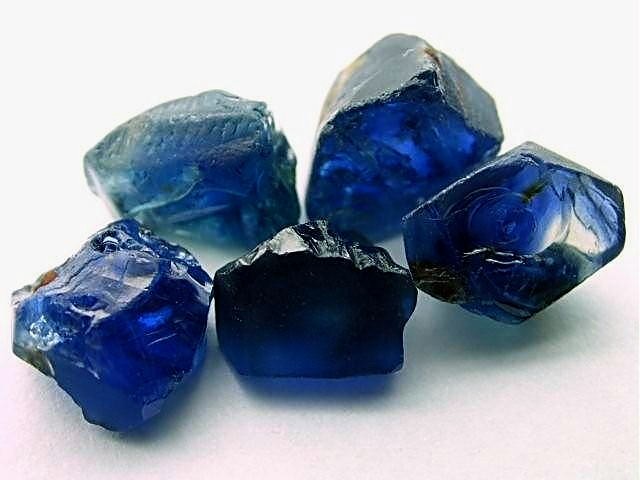
Rough Sapphire
The name sapphire is derived from the Greek word “sapherios” meaning blue however, they come in a rainbow of colours (except for red which is ruby). Sapphires are part of the corundum family found in crystalline limestones, pegmatites and basalts.
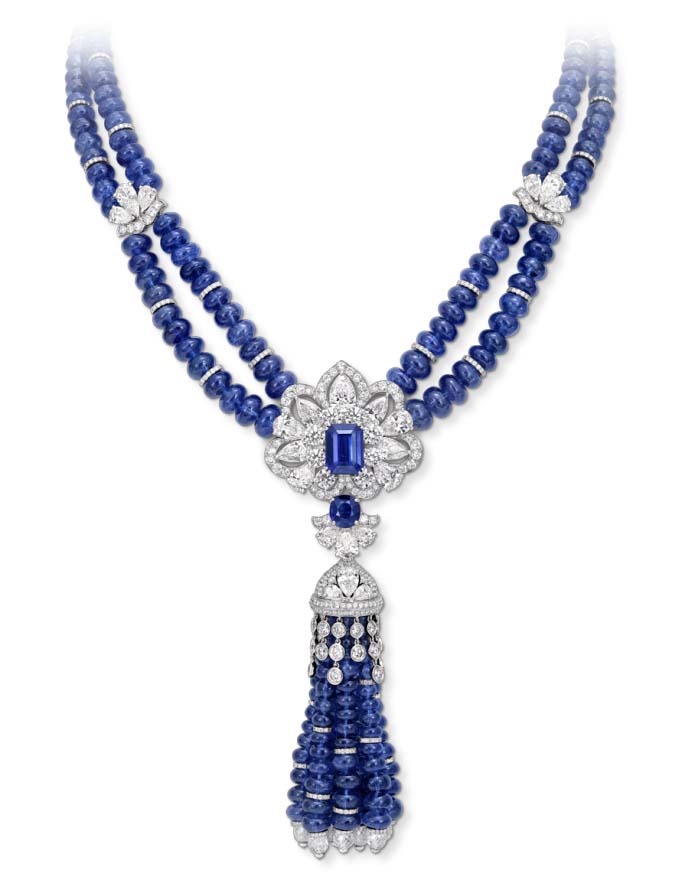
Sapphire Bead Necklace by Graff
The purer blue stones are the most valuable, the blue colour in sapphires come from the presence of titanium and iron atoms displacing aluminium in the crystal structure; in violet stones, it’s vanadium. A lower iron percentage results in yellow and green hues, pink hues are due to the presence of chromium. Sapphires are often heated to improve their colour and reduce cloudiness which is caused by inclusions.
Sapphires come from multiple sources worldwide, primarily Australia, Myanmar, Sri Lanka and Thailand. Sri Lanka is the largest producer of sapphires, yielding large light blue stones, whereas darker sapphires are found in Australia. To determine the origin of a sapphire the first thing a gemmologist will look for are inclusions. For example, a stone with pargasite or tourmaline crystals is likely to be from Kashmir whereas stones from Cambodia have uranpyrochlore inclusions. Sapphires have a Mohs hardness of 9, making them extremely durable, so much so that they are used in the window of spacecraft.
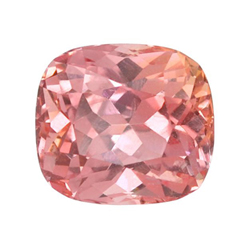
A Salmon Pink Padparadscha Sapphire
A rare colour of sapphire is called “Padparadscha”, derived from the Sinhalese word for aquatic lotus blossom. These stones are a salmon colour, bridging the gap between pink and orange; the finest of these stones are commonly found in Sri Lanka.
Blue Giant of the Orient
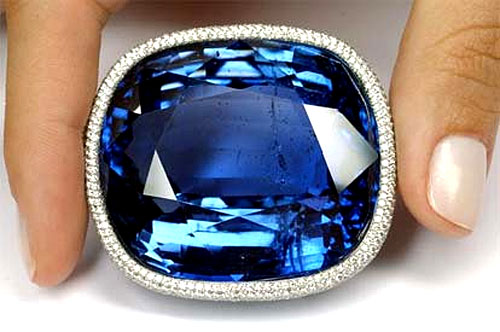
The largest faceted blue sapphire in the world was discovered in 1907, being 466 carats it still holds its’ title today. Sri Lanka is the only country in the world which has produced extraordinarily large gem-quality blue sapphires. Sri Lankan sapphires are currently the world’s 1st, 2nd and 3rd largest sapphires, even the largest rough sapphire crystal, weighing 19kg, is from the country.
Most of the large Sapphires are found in deposits at the foot hills of the Adams Peak mountain range in central south Sri Lanka. The Kalu Ganga river which originates at Adams Peak passes the city of Ratnapura (Gem City), which over time has carried gem bearing gravels, which is then deposited in the flood planes on the outskirts of the city.
Star of India 536ct
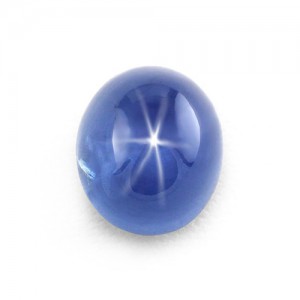
The Star of India
Currently held in the American Museum of Natural History, this sapphire is the world’s largest gem quality blue star sapphire, weighing in at 563 carats. Needle like rutile inclusions form the milky colour and star pattern, this phenomenon is called asterism.
St Edward’s and Stuart Sapphire
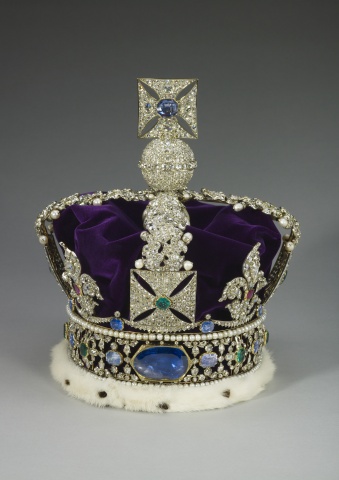
The Imperial State Crown
The Imperial State crown holds both the St Edward’s Sapphire and The Stuart Sapphire, along with 15 other sapphires, 11 emeralds, 269 pearls and 2868 diamonds. St Edward’s octagonal rose-cut sapphire is set in the middle of the Maltese cross at the top of the crown. The current crown was made for the coronation of King George VI in 1937 but is closely based on that made for the coronation of Queen Victoria in 1838. The stone is named after Edward the Confessor who is said to have worn it in his ring. The oval 104ct Stuart sapphire is believed to have been smuggled by James II, when he fled England in 1688. It was passed onto his son and eventually later returned to Britain by an Italian dealer sent on behalf of George IV, it was then set into the front of the crown for Queen Victoria’s coronation; the sapphire was moved to the rear of the imperial state crown to make way for the Cullinan II diamond in 1909.
The stones traditionally symbolise nobility, truth, sincerity and faithfulness; because of this sapphires have become popular in engagement rings.
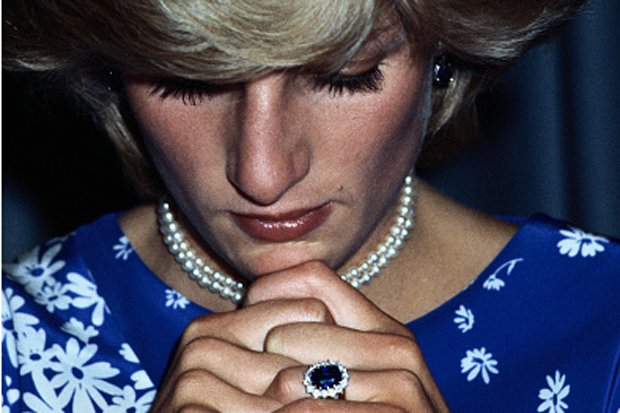
Lady Diana & her engagement ring
In 1981 Prince Charles and Lady Dianna Spencer were engaged with a Sapphire and Diamond engagement ring. The ring, made by royal jeweller Garrard & Co, had a 12 carat blue Ceylon sapphire surrounded by 14 diamonds, the design was inspired by a brooch presented to Queen Victoria by Prince Albert in 1840. The ring was all but forgotten about until 2012 when Prince William used his mother’s engagement ring to propose to Kate Middleton. The ring quickly became the must have and replicas appeared, pushing sapphire engagement rings up by 300%. The original cost of the ring was £28,000, it is now valued at around £300,000, making it one of the most expensive engagement rings in the world.
Here at IGR London we see all shapes and sizes of sapphires in for full gem reports along with those in for jewellery reports; most recently we had a 7.66 carat Sri Lankan blue sapphire in for a full gem report. Whether it be a Padparadscha pink or a Sri Lankan blue, there’s a sapphire colour for everyone!
Laura @IGR




